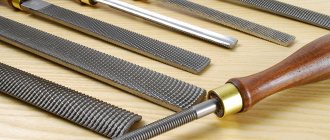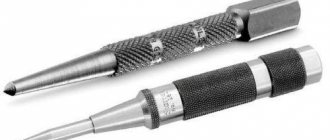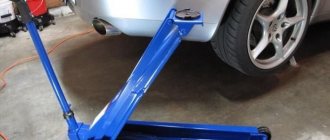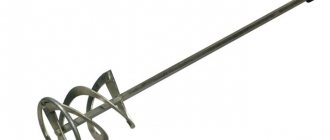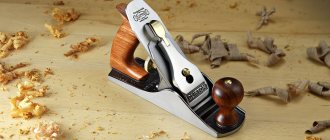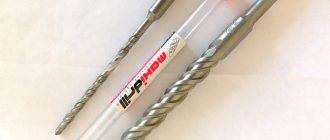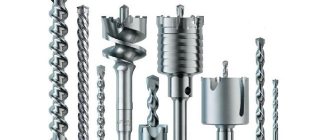What is bush hammer, its types, characteristics and purpose
In the field of construction and repair, sometimes it is necessary to resort to bush hammering - the process of roughening surfaces made of hard materials.
For this purpose, a specialized, unique tool of its kind is used - a bush hammer. The simplest version is a hammer with two striking surfaces, which are covered with various cutouts, tubercles and protrusions.
The use of notching tools such as bush hammers is dictated by the need to create technical roughness on the flat surfaces of stone, concrete and other materials.
This increases the strength of their adhesion.
Another application is to create a decoratively attractive appearance of the treated surface.
Bush hammers are also called special pneumatic pruning hammers.
They are used to remove excess hard material, such as stone, and give it a certain shape.
Purpose and principle of operation of bush hammers
Bush hammers are used to roughen flat surfaces for a variety of purposes.
This is both to prevent slipping on such surfaces and to have a decorative appearance.
Bush hammering solves the following problems:
• Removal of concrete sagging.
For example, when formwork is poured, the resulting concrete surfaces have convexities that are easily knocked off with bush hammer.
• Creation of a rough surface from a smooth one, which improves its adhesive properties.
Thus, the treated surface has better holding properties, for example, granite steps do not slip.
• Preparing wall areas for finishing, for example, removing old paint that has lost its appearance.
It is enough to lightly walk on the surface with light blows, and it will crack and crumble.
• Creation of technical notches on a flat surface before laying ceramics or tiles.
Allows the glue to better bond two smooth materials together.
• Creation of a decorative rough surface on marble and granite.
After processing, these materials look completely different, especially under properly set lighting.
• Removing a layer of rust from metal.
Typically, another tool is used for this.
However, if local processing of the metal surface is required to remove only the upper oxidized layer, a bush hammer can easily cope with the task.
When processing materials with a bush hammer, blows of varying strength and intensity are performed on their surface.
The teeth of the tool's working area cut into the material, breaking off pieces of it.
What is a bush hammer and what is the tool for?
A bush hammer is a hand tool that looks like a regular hammer with teeth on the working surface. The teeth are shaped like pyramids, and the base of the tool is made of steel. The tool is intended for processing concrete, stone and plaster surfaces. Flat surfaces are processed with bush hammer to give them roughness. The process of roughening the surface is called bush hammering.
The tool in question is not popular, and is often used by sculptors or repairmen who do finishing work. Using this tool, it is possible to solve a number of the following tasks:
- To remove concrete protrusions, for example when a concrete base is poured, protrusions remain after the formwork is removed. To remove these protrusions, a specialized tool is used - a bush hammer.
- Roughening smooth surfaces, which has a positive effect on the quality of adhesion. This is done so that finished smooth surfaces, for example, steps, do not slip. In addition, after the bush hammering procedure, it is possible to ensure a reliable connection of marble or granite slabs
- Preparing the wall surface for finishing. Bush hammering allows you to remove old paint from the surface, thereby preparing the base for further work.
- Creating notches on the base before further laying ceramic tiles and tiles. When laying tiles on a floor or wall, they will adhere better if the surface is rough.
- Giving smooth surfaces a decorative roughness. Typically this roughness is done on granite and marble.
- Removing corrosive deposits from the surface of a metal - it is not possible to completely clean the material from bush hammer corrosion, but performing primary treatment is quite possible. After the initial cleaning of the metal surface, metal brushes with grinders are used for finishing
To achieve the desired result, the surface being treated is struck with varying strength and intensity. The principle of operation of the tool is simple, and it is based on chipping concrete particles, thereby turning the surface from glossy to matte.
This is interesting!
Structurally, a manual bush hammer has the shape of a hammer with two surfaces. Teeth or protrusions are not only pyramidal, but also cone-shaped, obtained by casting.
Device and characteristics
The simplest bush hammer, made in the form of a classic hammer with two working surfaces on which star-shaped protrusions are carved, consists of a head and a wooden handle.
This tool is often used in everyday life when repairing premises.
Modern pneumatic models are technically simple tools, powered by compressed air supplied by a compressor.
They are a metal body with a coupling for connection to a pneumatic line, on which the working bits are fixed.
The operating principle is similar to a hammer drill.
Direct purpose and use of the tool
The most interesting thing is that this tool is based on an ordinary hammer, albeit slightly modified. If the working surface of a hammer is flat on one side and pointed on the other, then the working surface of a bush hammer is arranged differently. As a rule, such a hammer has two striking sides, on which there are cone-shaped teeth. This device is specially designed to make it easy to process rough natural stone using the chipping method.
Initially, this tool was used mainly by sculptors and stone workers. But, as it turned out, it is also very useful in construction work, and soon this tool began to be widely used by master builders. Here are the tasks a bush hammer can handle on a construction site:
- Removing concrete sagging. Very often, after pouring concrete, it happens that the formwork is swollen, as a result of which we get a bump that interferes with further work. Our tool will allow you to knock down this buildup and level the surface without much effort.
- We make a smooth surface rough. In this case, the tool will help us increase adhesion and improve the holding properties of smooth surfaces. For example, smooth concrete is very difficult to plaster, but if you “bush hammer” it, we will get a rough surface on which plaster and any finishing mixtures will adhere perfectly.
- Removing paint, dirt, deposits. It is enough to apply a few blows, and the treated surface will be ready for further processing; this is especially effective when removing old layers on walls and floors.
- Treatment of metal surfaces, in particular rust removal.
- Creating notches on the surface. Often, when laying ceramic tiles on a smooth surface, it is necessary to make additional notches so that the adhesive composition fits well and makes proper contact with the surface. In this case, such a hammer is simply a godsend for the master.
Mechanical bush hammer
This is a tool powered by some kind of energy source.
It processes the surface either by impact or by rolling star-shaped rollers.
Bush hammer nozzle
From options, both attachments for hammers, and specifically for construction power tools.
Mechanical tools, in turn, are divided into:
Electric bush hammers
A tool similar to a grinder, but instead of a cutting disc there is a round platform on which star-shaped carbide rollers are placed for bush hammering.
Cost – about 50 thousand rubles and more.
Pneumatic bush hammers
They work under compressed air pressure, but unlike a jackhammer, a compressor of less power is used.
The impact force is created inside the housing, and unlike electric models, the pneumatic hammer is practically not subject to overheating.
The main pressure on the treated surface is created due to its own weight.
The weight of such an instrument can reach more than six kilograms.
As a rule, the kit includes attachments with teeth of a pyramidal shape and in the form of longitudinal plates.
Due to the simplicity of the design, the tool is durable.
What is pneumatic hammering?
Bush hammering is the process of impacting surfaces made of concrete, rock or other hard substances in order to roughen them to increase adhesion, to remove old paint or contaminants, or to knock down lightly ingrained corrosion.
To process large surfaces, a pneumatic bush hammer is used, powered by air pressure created in the compressor. It allows you to carry out significant volumes of work with concrete during the construction of apartment buildings or high-rise buildings, where a conventional hammer drill cannot cope. The device operates similarly to a pneumatic jackhammer, but its main advantage, compared to a jackhammer, is the ability to use a lower-power compressor.
Pneumatic tools also have the advantage that they do not overheat during continuous operation, like their electric counterparts. With all this, the significant weight of industrial bush hammer models (up to 6 kg or more) also puts pressure on the surface being processed.
Lightweight versions of pneumatic bush hammers are produced for household use. They have less weight compared to industrial ones - about 3.5-4 kilograms, and they allow you to process not only the surface located below, under the tool. In one pass, as manufacturers claim, such a tool can remove from one to five mm. concrete.
The design of the pneumatic bush hammer does not contain complex components and elements, so it is very reliable and does not require complex maintenance or costly repairs. If the tool wears out, it is enough to replace the bit set. They are made from tungsten carbide and have a processing life of about 500 square meters of surface. The greatest wear is observed when processing reinforced concrete.
When working with a professional tool, a number of safety precautions must be observed. Wear safety glasses, gloves, and long sleeves to prevent debris from getting into your eyes or exposed skin.
How to choose bush hammer?
For household use, it is best to choose attachments for a hammer drill or grinder.
Almost every craftsman has these tools, which means that a full-fledged bush hammer for the home will be relatively cheap, and at the same time fully functional.
Sculptors who perfect their works by hand should acquire a set of hand tools.
For professional activities in the construction industry, it is better to choose, depending on the working conditions, an electric or pneumatic option, which has a high impact force and operating speed.
You also need to have various attachments available to perform different types of work.
How to use bush hammer?
Next, the instrument switch should be switched to the “impact” mode.
After this, we turn on the hammer with the trigger and lean the impact zone of the tool against the object, thereby starting to process its surface.
At the same time, keep the tool perpendicular.
To remove sagging and remove unevenness from the wall, it is possible to use a bush hammer, like an ordinary chisel.
In this case, the hammer drill is held at an angle to the plane.
Safety precautions
Any bush hammer, especially a mechanical one, breaks off small pieces of stone and crumbs, which fly in all directions at high speed.
